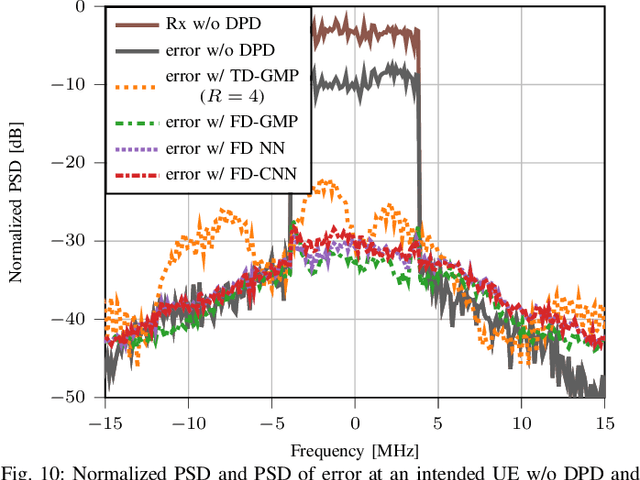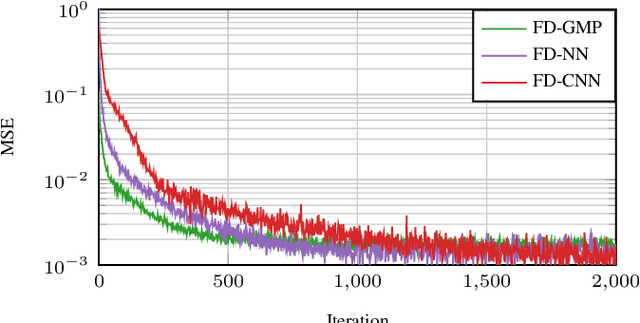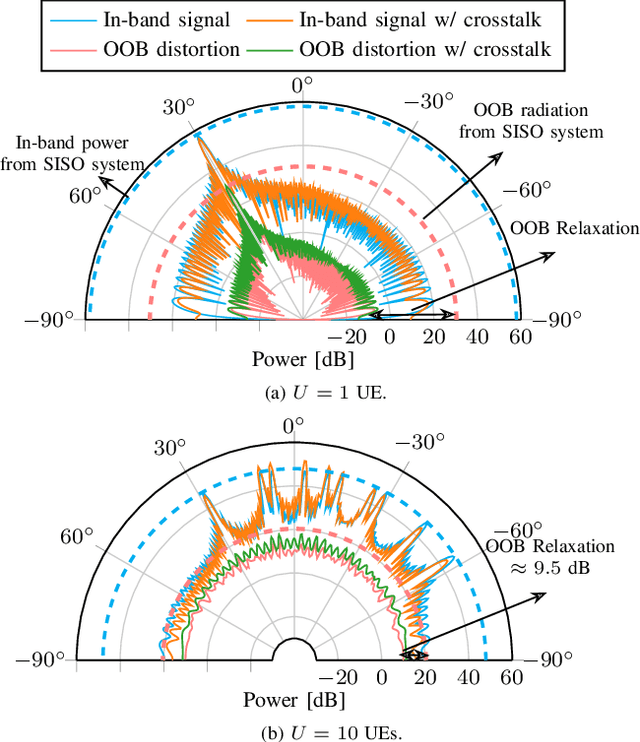Time vs. Frequency Domain DPD for Massive MIMO: Methods and Performance Analysis
Paper and Code
Feb 26, 2024



The use of up to hundreds of antennas in massive multi-user (MU) multiple-input multiple-output (MIMO) orthogonal frequency division multiplexing (OFDM) poses a complexity challenge for digital predistortion (DPD) aiming to linearize the nonlinear power amplifiers (PAs). While the complexity for conventional time domain (TD) DPD scales with the number of PAs, frequency domain (FD) DPD has a complexity scaling with the number of user equipments (UEs). In this work, we provide a comprehensive analysis of different state-of-the-art TD and FD-DPD schemes in terms of complexity and linearization performance in both rich scattering and line-of-sight (LOS) channels. We also propose a novel low-complexity FD convolutional neural network (CNN) DPD. The analysis shows that FD-DPD, particularly the proposed FD CNN, is preferable in LOS scenarios with few users, due to the favorable trade-off between complexity and linearization performance. On the other hand, in scenarios with more users or isotropic scattering channels, significant intermodulation distortions among UEs degrade FD-DPD performance, making TD-DPD more suitable.
 Add to Chrome
Add to Chrome Add to Firefox
Add to Firefox Add to Edge
Add to Edge